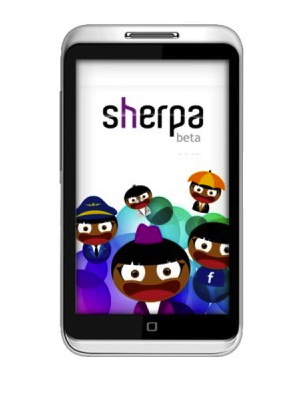2013 24
A different view on abortion
Published by MartinVarsavsky.net in General with
Spain just passed a very restrictive abortion law. I am against this law. I am mainly in favor of sex ed, using contraceptives especially condoms which prevent unwanted pregnancies and HIV infection, but should everything else fails I am in favor of abortion.
Now while I am in favor of choice I am in favor of true parental choice. I am for the rights of women to choose to end the pregnancy. But in the case of married or established couples, I am also in favor of fathers having a say in this decision. In laws around the world, freedom to abort focuses exclusively on the mother. The father has no power to stop an abortion. It is only the woman’s decision to abort or not. But in the case of married couples or established couples (as opposed to one night stands, accidental pregnancies or casual relationships) I think this is wrong. If the husband does want the child, I am not sure that the wife alone should have the right to abort. Because when the opposite happens and the woman decides not to abort then according to most countries’ laws the father can be forced to support that child and be an active parent. And this even includes not only married or established relationships but casual or accidental relationships as well.
So as things stand now, an abortion is only a woman’s decision, but a decision not to abort forces a father to be responsible for the child. That seems unbalanced to me. Just like a father cannot force an abortion on the mother the mother should not be able to force an abortion on the father in an established relationship. Either parent should be able to stop an abortion. This is not about the questionable rights of an early stage embryo, this is about the established rights of both parents.
2013 20
The communicators and the strategists
Published by MartinVarsavsky.net in General with
I have been fortunate to meet some of the most successful entrepreneurs in the world and I would like to share an observation with you.
 The most successful entrepreneurs… belong to two very different groups. The communicators and the strategists. When you meet communicators you are in awe. Examples are Bill Gates, Jeff Bezos. Their success makes sense to you. They can articulate very well how it came about, you buy it. When a communicator presents, interacts, speaks, their strategy is clear and communicating their strategy is part of their strategy. Communicators need to rally others to succeed, they need the participation and enthusiasm of partners and consumers and they know how to get it. Communicators are great presenters, great sales people.
The most successful entrepreneurs… belong to two very different groups. The communicators and the strategists. When you meet communicators you are in awe. Examples are Bill Gates, Jeff Bezos. Their success makes sense to you. They can articulate very well how it came about, you buy it. When a communicator presents, interacts, speaks, their strategy is clear and communicating their strategy is part of their strategy. Communicators need to rally others to succeed, they need the participation and enthusiasm of partners and consumers and they know how to get it. Communicators are great presenters, great sales people.
But when you meet a strategist you have the opposite reaction. You listen to them and wonder how could this person be so successful.
Now the strategists did not become successful selling themselves or building alliances, nor convincing others to buy their products, they made it by making one good decision after another. They don’t make sales calls, they hire others to do that. They basically just think hard. And that process, the introspection, the deep analysis, is impossible to see in another person. The instinct to choose the right members of their team, to go to the core of complex situations, to have a powerful vision of their product, to anticipate competitors moves, that is a process that is clear to them but opaque to the world. Mark Zuckerberg, Larry Page belong to the second group. Highly intelligent, amazing analysts and builders, poor communicators.
2013 3
Bought an iPad Air
Published by MartinVarsavsky.net in Internet & Technology with
 I am loving it. Nothing revolutionary but a much better iPad for the same money (we can thank Google for that, don’t want to think what Apple would be charging if Android was not also great). As promised the iPad Air is thinner, lighter, faster, sharper and with a better front camera. Where Android still beats iOS is in the freedom to put whatever keyboard you want (I love SwiftKey especially because it recognizes which language I am typing in), to put any WiFi manager (I use Fon’s), and in the ease to share anything from any app. I still don’t know why Apple makes sharing so hard. But the new iPad is not like when Apple went from the iPhone 4 to the 4S. It’s more like when the iPhone 4 came out. After the iPad Mini came out I found the iPad 2 too clunky. The iPad Air gives you a bigger screen, perfect to use while flying for example but a much lighter and thinner frame. Worth the upgrade!
I am loving it. Nothing revolutionary but a much better iPad for the same money (we can thank Google for that, don’t want to think what Apple would be charging if Android was not also great). As promised the iPad Air is thinner, lighter, faster, sharper and with a better front camera. Where Android still beats iOS is in the freedom to put whatever keyboard you want (I love SwiftKey especially because it recognizes which language I am typing in), to put any WiFi manager (I use Fon’s), and in the ease to share anything from any app. I still don’t know why Apple makes sharing so hard. But the new iPad is not like when Apple went from the iPhone 4 to the 4S. It’s more like when the iPhone 4 came out. After the iPad Mini came out I found the iPad 2 too clunky. The iPad Air gives you a bigger screen, perfect to use while flying for example but a much lighter and thinner frame. Worth the upgrade!
And if you want to learn about what is inside an iPad Air…
(Photo: NBC news)
As Columbus Day approaches in the USA and el dia de la Raza o Hispanidad in Spain and Latin America, here are some thoughts on the extermination of Native American cultures.
 Americans, both South Americans and North Americans mostly blame Europeans for the genocide of the different cultures that inhabited the continent. They blame Spain for example for the killing of Aztecs, Incas and the wiping out of their culture. And that is partly right. The colonization of America was an enterprise managed by Spanish emigrants (conquistadores) who moved to what is now Mexico, Peru, Ecuador, Venezuela, Central America, to exploit natives, enrich themselves and send precious metals back to Spain. But the paradox in the accusation of Americans to Europeans nowadays, is that the descendants of those who exterminated native populations are now those who actually live in America not those who live in Europe. Those who are in Spain or the UK now, are actually the descendants of those who stayed in Europe and therefore did not directly commit those horrible crimes. In other words the descendants of the murderers namely those who are today Venezuelans, US citizens or Argentines, are accusing the descendants of those who were not actually part of the genocide because they stayed home, of genocide. To give an example, Daniel Ortega, of Nicaragua, has changed the name of the Columbus Day festivity from “Dia de la Hispanidad” which means day of hispanic heritage day to “Dia de la Resistencia Indígena” or day of the resistance of native Americans. But Daniel Ortega is a descendant of a Spanish family, not of Indians, thus a descendant of conquerors. His family, his ancestors share the blame. The extermination of Native Americans is nothing to be celebrated, and it is true that Hispanidad is not a fair term as it does not include native cultures. But as far as responsibility for exploitation and extermination of native cultures is concerned, it belongs more to those who are now in America than those who are now in Europe. They are the victors of that conquest. Moreover, a lot of the extermination of natives went on in countries beyond independence from European powers. The last armed conflicts with native Americans ended as recently as 1924 and was carried out by the US government. The territory that is now the USA, and in the 1500’s was only inhabited by native Americans, now has a native American population at less than 1% of its total population. This is ethnic cleansing on a scale that has probably never occurred anywhere else. And if you think this article refers to conflicts that are long over, think again. Here’s an article that describe a possible armed conflict between the Brazilian government and native Americans that is going on right now.
Americans, both South Americans and North Americans mostly blame Europeans for the genocide of the different cultures that inhabited the continent. They blame Spain for example for the killing of Aztecs, Incas and the wiping out of their culture. And that is partly right. The colonization of America was an enterprise managed by Spanish emigrants (conquistadores) who moved to what is now Mexico, Peru, Ecuador, Venezuela, Central America, to exploit natives, enrich themselves and send precious metals back to Spain. But the paradox in the accusation of Americans to Europeans nowadays, is that the descendants of those who exterminated native populations are now those who actually live in America not those who live in Europe. Those who are in Spain or the UK now, are actually the descendants of those who stayed in Europe and therefore did not directly commit those horrible crimes. In other words the descendants of the murderers namely those who are today Venezuelans, US citizens or Argentines, are accusing the descendants of those who were not actually part of the genocide because they stayed home, of genocide. To give an example, Daniel Ortega, of Nicaragua, has changed the name of the Columbus Day festivity from “Dia de la Hispanidad” which means day of hispanic heritage day to “Dia de la Resistencia Indígena” or day of the resistance of native Americans. But Daniel Ortega is a descendant of a Spanish family, not of Indians, thus a descendant of conquerors. His family, his ancestors share the blame. The extermination of Native Americans is nothing to be celebrated, and it is true that Hispanidad is not a fair term as it does not include native cultures. But as far as responsibility for exploitation and extermination of native cultures is concerned, it belongs more to those who are now in America than those who are now in Europe. They are the victors of that conquest. Moreover, a lot of the extermination of natives went on in countries beyond independence from European powers. The last armed conflicts with native Americans ended as recently as 1924 and was carried out by the US government. The territory that is now the USA, and in the 1500’s was only inhabited by native Americans, now has a native American population at less than 1% of its total population. This is ethnic cleansing on a scale that has probably never occurred anywhere else. And if you think this article refers to conflicts that are long over, think again. Here’s an article that describe a possible armed conflict between the Brazilian government and native Americans that is going on right now.
(Photo credit: Laurel Creativa)
2013 11
How to Have No Wallets and a Safer World
Published by MartinVarsavsky.net in General with
Cash was essentially replaced by plastic decades ago. Now plastic credit cards are becoming obsolete, especially if you carry a smartphone. They are not dead quite yet, but services like Hailo and Uber are just two examples of transactions in which using a credit card is becoming unnecessary. In fact there are a number of efforts underway to eliminate their need and to have you pay for everything using your smartphone. But if credit cards disappear, unfortunately the wallet does not disappear in turn — there is still everything else that we are obliged to carry in our wallets. The truth of the matter is that we should get rid of the wallet itself: it’s uncomfortable and dangerous to carry around, especially considering how common identity theft is nowadays.
 In my wallet for example I have my Spanish national ID, my US and Spanish driver’s license, my medical insurance card, my pilot’s license, my sailing license, my car registration, and a copy of my car insurance. I still need to carry all these things because at various points in my life I may be asked for each one of them. Indeed, in many countries in Europe — and I know this sounds crazy – you can actually go to jail for not having your plastic national ID on you, if asked for it by the police.
In my wallet for example I have my Spanish national ID, my US and Spanish driver’s license, my medical insurance card, my pilot’s license, my sailing license, my car registration, and a copy of my car insurance. I still need to carry all these things because at various points in my life I may be asked for each one of them. Indeed, in many countries in Europe — and I know this sounds crazy – you can actually go to jail for not having your plastic national ID on you, if asked for it by the police.
Now think of another way of doing this. Think of a website that is a repository of all these IDs, and is government-owned or certified. Why can’t I just visit a police station once, pay a fee (so the government doesn’t lose money on this), show all my documentation, have the government scan and upload everything so that all policemen and pertinent authorities can have access. Then my car insurance company, my health insurance company, the car registration agency can all notify this government repository if I stop paying, or if my insurance policy is not valid anymore.
Estonia has done the most in this direction and its citizens love the system. In 2002 they introduced the most highly-developed national ID card system in the world. The mandatory national card is a legal picture ID and also serves as the digital access card for all of Estonia’s secure e-services:
– National health insurance: Estonia has a nationwide system that integrates data from Estonia’s different healthcare providers to a create a common record for each patient. In an emergency situation, a doctor can use a patient’s ID card to read time-critical information, such as blood type, allergies, recent treatments, ongoing medication or pregnancy status.
– Medical prescriptions: At any pharmacy, all a patient needs to do is present an ID card. The pharmacist then retrieves the patient’s information from the system and fills the prescription.
– Public transport: The ID card acts as a pre-paid public transport ticket in Tallinn and Tartu.
– Digital signatures: Public administration and businesses can freely use the digital signature system, and have applied it to a variety of web-based services.
– And even voting: In 2005, Estonia became the first country in the world to hold nation-wide elections using this method. Estonians can cast their ballots from any Internet-enabled device and connect anywhere in the world using an ID card reader.
This digitization and aggregation of information only streamlines complicated bureaucratic processes that need not be so, and at the same time makes them safer. Imagine a world in which the police has tablets or smartphones that show nice big pictures of you, in which whatever they currently do secretly with NSA-type agencies they do openly instead. If they find you without an ID they ask, “who are you?”, and once you give your name, they can see your photo and a ton of information about you. It would be so hard for anyone to impersonate you.
I find it paradoxical that while some government agencies spy on you and know all about you, others pretend to know nothing until you show them a piece of plastic that if you lose, somebody else can impersonate you with. We need to evolve from this. We need to evolve into a system in which we have no wallets and a safer world!
(See original article and more comments on LinkedIn. Photo credit: Loyal Mark)
2013 26
Fon Expansion in the US!
Published by MartinVarsavsky.net in Fon with
I am pleased to announce a new strategic deal with AT&T. Fon has been growing in leaps and bounds this year, and we are excited to finally expand into the US market.

Fon was born in 2006, and blanketing the world, and particularly the US, with Fon WiFi has always been our goal. We found our winning model collaborating with telcos but while we signed deals with operators all over the world, we had difficulties in the US. However much has changed and it seems that the time is right to take on our long standing challenge: on the one hand Fon is now a worldwide WiFi leader, with a proven business model, partnerships with major telcos and the largest WiFi network in the world with almost 12 million hotspots. On the other hand, the US definitely needs WiFi now more than ever: more than 60% of adults in the country own a smartphone and 25% of all website traffic comes from mobile devices.
The partnership with AT&T will allow roaming between our respective WiFi networks, meaning that AT&T customers who download the WiFi International App will initially be able to connect to hundreds of thousands of our FonSpots overseas and Fon members will gain access to AT&T’s Wi-Fi network, including more than 30,000 hotspots at restaurants, hotels, bookstores and retailers throughout the States.
This is only the first step in our mission to cover the US with WiFi. We’re sure there will be more exciting developments in a near future.
 In the USA business degrees are mostly graduate degrees. And there is a good reason for that. Unfortunately, this is not the case in Europe. And this is not good for European businesses. My advice is that if you are interested in working in business later on in life you should wait and not get an undergraduate degree in business out of high school. Instead, for the first years of your career, it is much better to get a degree in computer science, engineering of any kind, math/physics, biology/biomedical sciences. And then get a degree in business. People who apply to work with us with undergraduate and graduate degrees in business tend to have huge gaps in basic knowledge. This lack of basic education handicaps them. They can talk about products but they don’t really understand how products work. Their shallow knowledge about the functionality of products shows when trying to design or improve them. Probably the only exception to this is banking. As for the rest, a wider scientific knowledge is needed. When you study business you study the language of business, finance, accounting, marketing. But if you can build a product via your engineering skills, biomedical skills, coding skills, and on top of that you have a good command of the business language, then you are really in business.
In the USA business degrees are mostly graduate degrees. And there is a good reason for that. Unfortunately, this is not the case in Europe. And this is not good for European businesses. My advice is that if you are interested in working in business later on in life you should wait and not get an undergraduate degree in business out of high school. Instead, for the first years of your career, it is much better to get a degree in computer science, engineering of any kind, math/physics, biology/biomedical sciences. And then get a degree in business. People who apply to work with us with undergraduate and graduate degrees in business tend to have huge gaps in basic knowledge. This lack of basic education handicaps them. They can talk about products but they don’t really understand how products work. Their shallow knowledge about the functionality of products shows when trying to design or improve them. Probably the only exception to this is banking. As for the rest, a wider scientific knowledge is needed. When you study business you study the language of business, finance, accounting, marketing. But if you can build a product via your engineering skills, biomedical skills, coding skills, and on top of that you have a good command of the business language, then you are really in business.
First learn how things work, then how to create them, then how turn them into a business. People do not succeed talking about money, they succeed talking about product. Learn the language of product before learning the language of money.
(Photo: TrillionFund.com)
 Over the past academic year, I was a visiting professor at Columbia University’s SIPA and at NYU’s Stern teaching entrepreneurship. I love teaching; I have been doing it for over a decade. However, my teaching style is quite different from the traditional academic format of cases, essays and exams. Instead, my method consists of a role-playing game in which students play two simultaneous parts: entrepreneur and venture capitalist using a virtual currency. I have been using this method for several years now, previously at the Instituto de Empresa in Madrid, and more recently at Columbia University and NYU and students have consistently found it useful.
Over the past academic year, I was a visiting professor at Columbia University’s SIPA and at NYU’s Stern teaching entrepreneurship. I love teaching; I have been doing it for over a decade. However, my teaching style is quite different from the traditional academic format of cases, essays and exams. Instead, my method consists of a role-playing game in which students play two simultaneous parts: entrepreneur and venture capitalist using a virtual currency. I have been using this method for several years now, previously at the Instituto de Empresa in Madrid, and more recently at Columbia University and NYU and students have consistently found it useful.
How does my method work?
Firstly, as entrepreneurs, each student must come up with a fictional business venture to present to his or her classmates, who act as VCs. The ventures are presented almost exactly as they would be presented in a real life situation – a three minute elevator pitch followed by an investor summary, financials and finally a less common YouTube commercial. The elevator pitches are presented in class and moderated by me, the professor, while the financials and investor summaries are posted online: either in a class Dropbox/Drive file or on the school’s student portal e.g. Blackboard or CourseWorks.
In this class I introduce a virtual currency, think of Bitcoin but instead of Bitcoin it is a “unicoin”. A currency that is backed by the issuance of grades that professors have at university. When I teach Columbia University, NYU, IE all give me the ability to grade students. What I do is to create a currency backed by the ability to grade and distribute it to students who frequently alternate between being investors (currency providers) and entrepreneurs (currency recipients)
These ventures need 5 million unicoins (sometimes I also use virtual dollars or virtual euros depending on where I am teaching) to break even while at the same time all of the students act as VCs and have 1 million in unicoins to invest. This generates a capital shortage that is similar to that existing in the real world, in which there are more ventures looking for funds than there are funds available. It also generates a shortage of good grades the currency of universities. The game basically translates the shortage of funds that exists in the world to the shortage of A’s that exist in a university.
Investments take place in two rounds over the course of the semester. The first round takes place after the students have presented and developed their elevator pitch, investor presentation and financials. The second round occurs after students have seen the “creative” side of their classmates through the presentation of the YouTube commercials. The choice to add a creative side to the process is that many students excel at one or the other – business or creative – but the best entrepreneurs will usually do both well. It is also important as an entrepreneur’s creative side dictates the look and feel of an early stage company: branding, marketing, etc.
These rounds are structured in a certain way so as to improve the experience of the game. Firstly, in each round a VC must invest $500,000 so as to consider first the business side and then the business side coupled with the creative side. Secondly, students must invest in at least ten companies per round. This forces the VCs to diversify their portfolio and has the added benefit of making sure every entrepreneur raises some money. The third rule is that VCs cannot invest less than 25K or more than 150K per company (this can be changed depending on class size). The reason for this is so the VCs cannot hedge their bets by investing in everyone. And finally, students may not invest in their own ventures. This rule also has the added benefit of equalizing the grading system somewhat as the best entrepreneur is at a very slight disadvantage when investing. To keep the game fair, I monitor the investment rounds and intervene only when I detect collusion. Though rare, if collusion is detected I act as a super investor with unlimited funds to restore the balance.
On top of this method, over the course of the semester I give talks and ask questions during class to find out where student knowledge is lacking. For example, I ask them about convertible notes and if there isn’t a good general understanding I will stop the class and give a tutorial. An example presentation that I give can be found here. So what in other classes would be called formal teaching in my class is a “commercial interruption” of the game that is constantly played throughout the course. Every time I teach, the class turns out to be different because I teach “on demand”. I give tutorials on angel investing, stock options, board compositions, and other key subjects as the need for these learnings arises in class.
The final grade is calculated based on how good students were as entrepreneurs and how good they were as VCs. The final grade will be the average of these two scenarios; but in life, if you are only good at one of them, you can still be very successful.
So how are the grades calculated?
The grade as an entrepreneur is calculated simply from how much money each student raised. However, the VC portion of the grade is a little more complicated. First a ranking of companies is established that is proportional to the amount of capital raised – this is calculated by dividing the amount raised by an entrepreneur by the amount raised by the best entrepreneur. This gives a proportional point value to every dollar invested in each entrepreneur. Then, the amounts invested by each student in each company are multiplied by the ranking of the companies and in this way the value of the investment portfolio is established. To better understand the concept, here is a spreadsheet we created last semester that automatically calculates all the rankings and portfolio values.
Ultimately this method of teaching takes a large amount of the critical review process out of the hands of the professor and puts it into the hands of each entrepreneur/venture-
This model is scalable and can be applied to any curve recommended by the school quite easily. Moreover, students love it, as the course is a simulation of what would happen in the real world and it is intrinsically fair – grading is essentially crowd sourced. They also make lasting connections through heavy interaction with their peers along with sharing knowledge through constructive criticism.
2013 3
Siri on iOS vs Sherpa on Android
Published by MartinVarsavsky.net in Internet & Technology with
 I am currently testing Sherpa Assistant for Android vs Siri on Apple. I am doing this with my HTC One and my iPhone 5. So far everything I ask they respond equally, they are very similar products. Now these are some differences I found.
I am currently testing Sherpa Assistant for Android vs Siri on Apple. I am doing this with my HTC One and my iPhone 5. So far everything I ask they respond equally, they are very similar products. Now these are some differences I found.
Sherpa allows you to post on Facebook, LinkedIn and Twitter, Siri only on Facebook. Neither on Tumblr.
Sherpa allows you to change languages on the fly by saying change to Spanish, o cambia a inglés, Siri does not. This is especially useful for me.
Neither Siri nor Sherpa are integrated in any way with Amazon or eBay to shop but Sherpa allows you to input your PayPal account and pay for things, Siri does not.
In general I think both assistants should evolve into two different modes of operating, “blind” and “visual”. Blind would be when you are driving and it is dangerous to look at a screen; in that case, all results and interaction must be spoken only, as if you were truly blind. Indeed this method could be tested by blind people and be extremely helpful to them. Also this would allow for a computer whose only interface is a microphone and a speaker which in itself can be a fantastic tool.
![]() Then they should both operate in a visual mode meaning you speak and the mobile device shows you results on the screen and speaks back.
Then they should both operate in a visual mode meaning you speak and the mobile device shows you results on the screen and speaks back.
Also there should be some ways of communicating clearly that you want to operate inside an app as opposed to inside the app of Siri or Sherpa. For example I should be able to say, I would like to post this on Tumblr. Or say something like, take dictation, and then Siri or Sherpa take dictation and when you are done it reads it back to see that it got it right and then it asks you what you want to do with that text. You can then post it on email, Facebook, a blog, Tumblr, a note, etc. Mobile devices come in silos called apps. Sherpa or Siri have to be good for interacting inside their own app or for accessing these silos, and this is not well solved in either platform.
Now what is impressive about Sherpa is that it is being done by a 12 person team out of Bilbao, Spain and overall is a better product than Siri.
2013 29
The most exciting time in universal history may be now
Published by MartinVarsavsky.net in General with
 I was thinking that there are important things we know about the future and the universe. These are derived from the fact that we have not been visited neither by aliens nor by time travelers so far. If the universe was an exciting and lively place, you would imagine that by now we would have been visited by aliens. Or at least our radio telescopes would have detected amusing radio signals as our TV signals could be received from other places in the universe and find to be entertaining (at least some). But there is nothing. No aliens nor intelligent radio signals. We have been trying to find intelligent radio signals for 40 years now. Nothing. Boring. If there is something it’s too far away.
I was thinking that there are important things we know about the future and the universe. These are derived from the fact that we have not been visited neither by aliens nor by time travelers so far. If the universe was an exciting and lively place, you would imagine that by now we would have been visited by aliens. Or at least our radio telescopes would have detected amusing radio signals as our TV signals could be received from other places in the universe and find to be entertaining (at least some). But there is nothing. No aliens nor intelligent radio signals. We have been trying to find intelligent radio signals for 40 years now. Nothing. Boring. If there is something it’s too far away.
Secondly if time travel had been invented in the future or something that could travel faster than the speed of light, that would be incredibly exciting. But it hasn’t happened. No time travelers have shown up. This means that humans in the future don’t get to be so smart as to master time travel and come and visit us now, or it could also mean that we never get to the time in the future in which we master that because we blow ourselves up before. Lastly it could also mean that humans of the future find us not worth visiting or that they time travel but not back to our times.
So just by the fact that we have not been visited neither by aliens nor by time travelers we can estimate that most likely the universe or at least the universe that is “near” us is not that exciting, nor the future is as fascinating enough for humans to master time travel.
Now to end on a more positive note: maybe if the universe is uneventful and the future is not that exciting, we can rejoice in thinking that we are lucky to be the only ones who seem to be doing something lively and fascinating in the universe, right here, right now, on Planet Earth. Let’s enjoy it!
